In today's fast-paced digital landscape, businesses are increasingly turning to artificial intelligence (AI) to gain a competitive edge. Deep learning, a subset of AI, has been at the forefront of groundbreaking developments. However, data-intensive AI projects can be challenging, with the need for extensive training on large datasets. Fortunately, there's a game-changing solution: Transfer Learning.
This article explores the concept of transfer learning in deep learning and its profound significance for CEOs, CIOs, and CMOs in achieving faster and more efficient AI solutions. We'll delve into how pre-trained models can be fine-tuned for specific tasks, reducing the training burden and accelerating AI development.
The Deep Learning Revolution
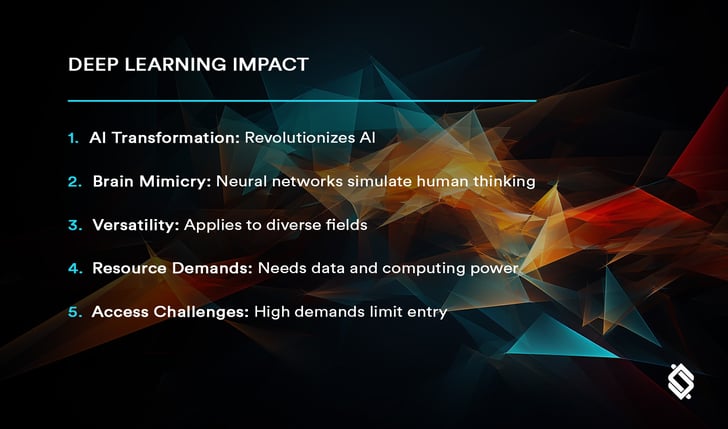
Deep learning has revolutionized the way we approach AI projects. It involves training artificial neural networks to perform tasks and make predictions by simulating the human brain's neural processes. This technology has enabled remarkable advancements in various fields, from image and speech recognition to autonomous vehicles and medical diagnostics.
However, the power of deep learning comes at a cost: it's hungry for data and computing resources. Traditionally, building effective deep learning models required vast amounts of labeled data and substantial computational power. For many organizations, these demands have been a significant barrier to entry.
The Data-Intensive Dilemma
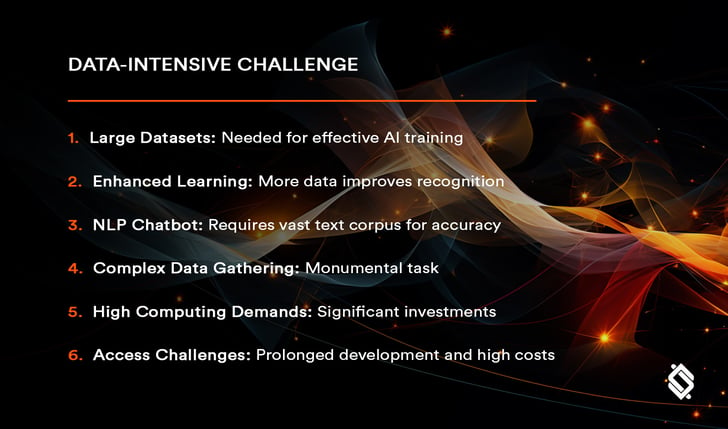
Data-intensive AI projects are characterized by their need for massive datasets to train models effectively. The more data you feed into your neural network, the better it learns and generalizes. This process is what enables AI systems to recognize patterns, make predictions, and perform tasks with precision.
Imagine you're developing a natural language processing (NLP) model for a customer service chatbot. To achieve optimal accuracy and relevance, you'd need to train the model on a colossal corpus of text data, covering a wide range of topics and languages. Gathering, curating, and annotating such a dataset is a monumental undertaking.
Moreover, the computational power required to process and train on these vast datasets is substantial. Organizations often invest heavily in high-performance computing infrastructure to meet these requirements.
The result? Lengthy development cycles, high costs, and increased barriers for businesses looking to harness the power of deep learning.
Enter Transfer Learning
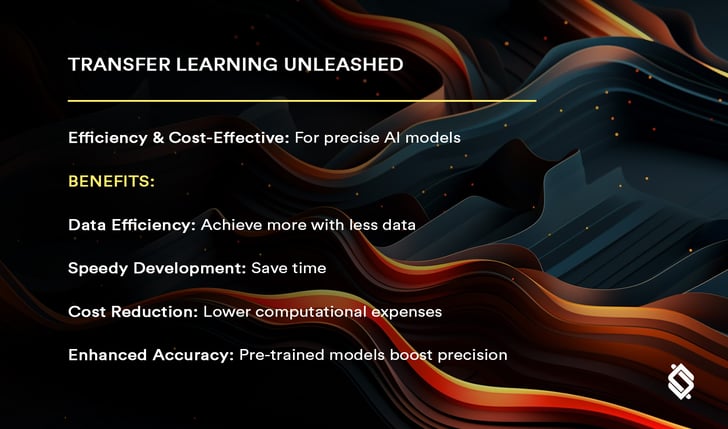
Transfer learning is the beacon of hope in the data-intensive AI landscape. It offers a more efficient and cost-effective path to building AI models that are both accurate and quick to develop.
Transfer learning, in a nutshell, is the practice of leveraging pre-trained models for new, related tasks. Instead of starting from scratch with a neural network and training it on your massive dataset, you can take a pre-existing, well-trained model and fine-tune it to your specific needs. This process is like taking a skilled chef and teaching them a new recipe – they already have a solid foundation in cooking and just need some tweaks to master the new dish.
The benefits are manifold:
- Reduced Training Data Requirements: Transfer learning dramatically reduces the amount of labeled data needed. You can achieve impressive results with a relatively small dataset.
- Faster Development: With a pre-trained model as your starting point, you can save weeks or even months of development time. Your model is already proficient; it just needs some customization.
- Lower Computational Costs: Since you don't need to process and train on massive datasets from scratch, the computational overhead decreases significantly. This translates to cost savings.
- Improved Model Accuracy: Transfer learning often leads to more accurate models because the pre-trained models have already learned valuable features and patterns.
The Mechanics of Transfer Learning
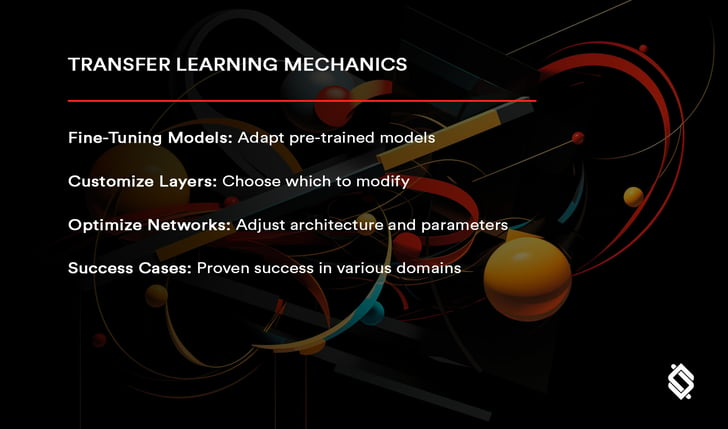
Now that we've established the advantages of transfer learning, let's dive into how it works.
- Fine-Tuning Pre-trained Models: The crux of transfer learning is taking a pre-trained model, which was originally developed for a different task, and adapting it for your specific task. Think of it as modifying a template to suit your unique needs.
- Reusing Layers and Features: Pre-trained models consist of multiple layers, each responsible for different aspects of feature extraction and data processing. When you fine-tune a model, you can decide which layers to keep as they are and which ones to customize.
- Optimizing Neural Networks: The process involves modifying the neural network's architecture, retraining certain layers, and adjusting parameters to ensure it excels at your specific task.
- Case Studies of Success: Many organizations have successfully harnessed transfer learning to expedite their AI projects. From image recognition to language translation, the proof of concept is abundant.
Transfer Learning in Data-Intensive AI Projects
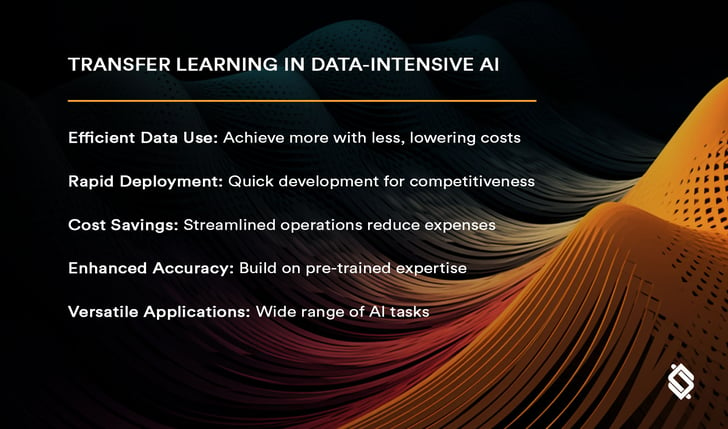
Now, let's examine how transfer learning directly addresses the challenges of data-intensive AI projects.
- Data Efficiency
With traditional deep learning, the hunger for data is insatiable. The more data you have, the better. However, in the real world, obtaining vast amounts of high-quality labeled data is often impractical and expensive.
Transfer learning flips this narrative. By starting with a pre-trained model, you can achieve remarkable results with less data. This is a game-changer for companies that may not have access to massive datasets or those looking to reduce data acquisition costs. - Speed to Market
In today's business environment, agility is crucial. Faster development of AI solutions can be a competitive advantage. Transfer learning significantly shortens the development cycle. You can go from concept to deployment in a fraction of the time it would take with traditional deep learning.
For CEOs, this means quicker access to AI-driven insights, improved decision-making, and faster responses to market changes. - Cost Reduction
Traditional deep learning requires substantial computational power, which often leads to high operational costs. These costs include not only hardware and infrastructure but also the personnel needed to manage and maintain these resources.
Transfer learning cuts these costs. With less computational demand, you can utilize standard hardware and streamline your AI development process. This cost reduction directly impacts your organization's bottom line. - Accuracy
Accuracy is the hallmark of any AI system's success. Traditional deep learning methods may require extensive fine-tuning and extensive datasets to reach satisfactory accuracy levels.
Transfer learning, however, starts with a foundation of a pre-trained model that already possesses a degree of expertise in a related task. By fine-tuning this model, you build upon this expertise, resulting in a highly accurate AI solution. For CIOs and CMOs, this translates into more reliable and effective AI applications. - Versatility
The versatility of transfer learning is another point worth noting. You can apply this technique to a wide range of AI tasks, from image and speech recognition to natural language processing and recommendation systems. This flexibility ensures that AI can be integrated into various aspects of your business operations.
Choosing the Right Pre-trained Model
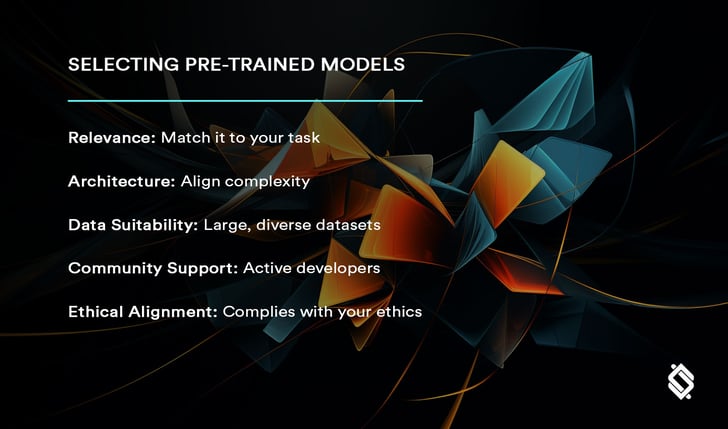
Selecting the appropriate pre-trained model is a critical decision in the transfer learning process. Here are some key factors to consider:
- Task Relevance: The pre-trained model should be relevant to your specific task. If you're working on image classification, choose a model that has excelled in similar tasks.
- Model Architecture: Assess the architecture of the pre-trained model. It should align with the complexity of your task. A model that's too simple or too complex may not yield the best results.
- Available Data: Ensure that the pre-trained model you choose is based on a large and diverse dataset. This improves its adaptability to your task.
- Community Support: Models with an active community of developers and users tend to receive regular updates and improvements. This ensures that your model remains up-to-date and relevant.
- Ethical Considerations: Be mindful of the source and nature of the pre-trained model's data. It's important to align with your organization's ethical and privacy standards.
Common Pitfalls and How to Avoid Them
While transfer learning offers immense benefits, there are potential pitfalls to avoid:
- Overfitting: It's possible to fine-tune a pre-trained model too much for your specific task, leading to overfitting. This can harm generalization and lead to poor performance on new, unseen data.
- Data Quality: Even though you need less data, the quality of the data you use for fine-tuning is crucial. Low-quality or biased data can negatively impact your model's performance.
- Lack of Domain Knowledge: A deep understanding of the task and domain is vital when customizing a pre-trained model. Without this knowledge, it's challenging to make the right architectural decisions.
- Model Evaluation: Proper evaluation and testing are essential to ensure that your fine-tuned model meets the required performance standards. Neglecting this step can lead to unexpected issues down the road.
Customization and Adaptation
Transfer learning isn't a one-size-fits-all solution. It requires careful customization to meet your project's unique requirements. This adaptation involves fine-tuning the model's architecture, adjusting hyperparameters, and optimizing the training process.
Customization also includes selecting the most appropriate layers for modification. Some layers may contain general features that are universally applicable, while others may need more specific fine-tuning for your task.
Overcoming Potential Limitations
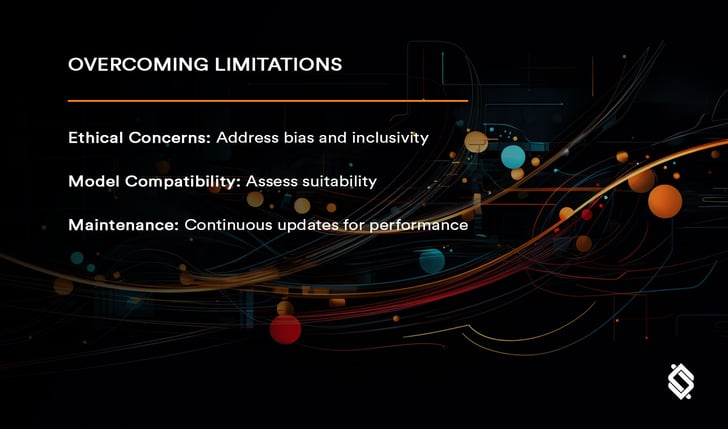
As with any technology, transfer learning has its limitations. It's crucial to be aware of these and take steps to address them effectively.
Ethical Considerations
The use of pre-trained models can raise ethical concerns, particularly when the source data or training data for the models is biased or not representative of diverse populations. It's important for organizations to consider these ethical implications and take steps to ensure fairness and inclusivity in AI applications.
Model Compatibility
Pre-trained models may not always be a perfect fit for your specific task. They may require extensive customization, and sometimes, they might not be suitable at all. It's important to assess the compatibility of a pre-trained model with your project's objectives before investing time and resources in fine-tuning.
Model Maintenance
AI models, including fine-tuned ones, require ongoing maintenance and monitoring. As data evolves and business needs change, your AI models may need updates and retraining to remain effective. Neglecting this aspect can lead to the deterioration of AI performance.
Real-World Success Stories
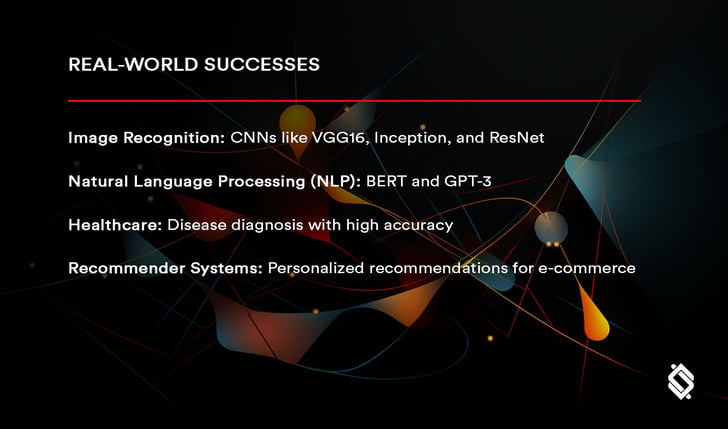
Let's delve into some real-world examples to illustrate the transformative power of transfer learning.
Image Recognition
In the field of image recognition, transfer learning has had a significant impact. A well-known example is the use of pre-trained convolutional neural networks (CNNs) for tasks like image classification. Models like VGG16, Inception, and ResNet have been pre-trained on vast datasets, making them excellent starting points for custom image recognition projects.
Natural Language Processing (NLP)
NLP is another domain where transfer learning shines. The introduction of pre-trained language models like BERT and GPT-3 has unlocked new possibilities for language-related tasks. These models can be fine-tuned for various NLP applications, such as sentiment analysis, language translation, and chatbots, saving organizations considerable development time and resources.
Healthcare
In the healthcare sector, transfer learning has shown promise in diagnosing diseases from medical images. Radiologists can fine-tune pre-trained models to identify specific conditions, such as cancer or fractures, with high accuracy. This not only accelerates the diagnosis process but also reduces the risk of human error.
Recommender Systems
E-commerce and streaming platforms benefit from transfer learning by customizing recommendation algorithms. Pre-trained models can be adapted to individual user preferences, leading to more accurate and personalized recommendations, ultimately boosting user engagement and sales.
Future Trends and Conclusion
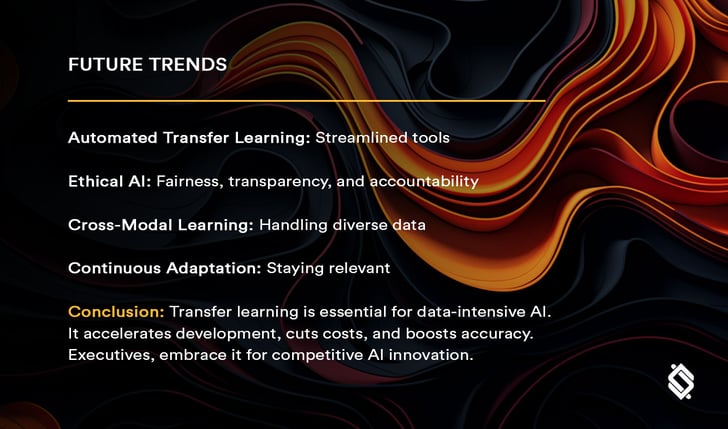
The world of deep learning and transfer learning is in a state of constant evolution. As we move forward, several trends are likely to shape the future of AI development:
- Automated Transfer Learning: We can expect the development of tools and platforms that streamline the process of transfer learning, making it more accessible to a wider range of businesses.
- Ethical AI: Ethical considerations will continue to be at the forefront of AI development. Organizations will place a strong emphasis on fairness, transparency, and accountability in their AI applications.
- Cross-Modal Transfer Learning: Researchers are exploring how to transfer knowledge between different types of data, such as images and text. This will open up new possibilities for AI applications that can understand and process multiple modalities of information.
- Continuous Learning: AI systems will become more adaptive and capable of continuous learning, allowing them to stay relevant and effective as data and circumstances change.
In conclusion, transfer learning is a game-changer for data-intensive AI projects. It accelerates development, reduces costs, and enhances accuracy. For CEOs, CIOs, and CMOs, embracing transfer learning is not just an option; it's a strategic imperative to stay competitive in the rapidly evolving world of AI. As you chart your organization's AI journey, consider the potential of transfer learning to reshape your approach to AI development and drive transformative results.



